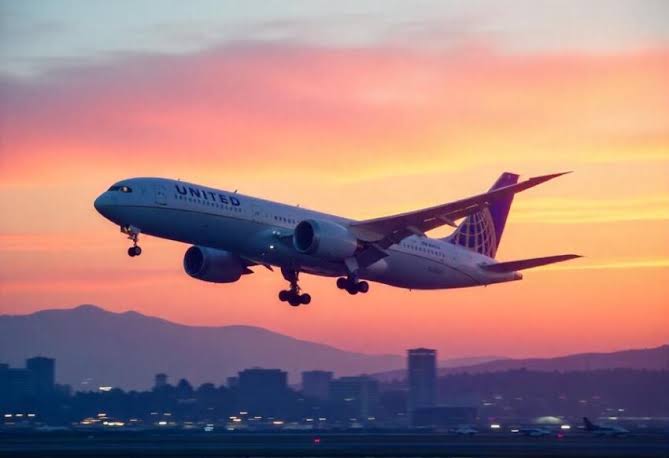United Airlines Cancels Flight From Los Angeles To Toronto
United Airlines Cancels Flight From Los Angeles to Toronto: What This Means for Travelers and the Aviation Industry
United Airlines has recently made headlines with its decision to cancel the planned Los Angeles (LAX) to Toronto Pearson (YYZ) route. The cancellation, effective immediately, has left many travelers questioning the reasons behind this decision and what it means for both the airline and the broader aviation industry. While some may see this as a minor adjustment in United’s flight operations, it highlights several underlying trends and issues that could have far-reaching implications for the airline and its passengers.
The Impact on Travelers
For passengers who had already booked flights on the United Airlines Los Angeles to Toronto route, this cancellation has caused significant inconvenience. Travelers who planned to fly between two major North American hubs are now left scrambling to make new arrangements. Given that Toronto is a critical gateway for business and leisure travel between Canada and the United States, particularly to and from California, this cancellation has broader implications than a typical route change.
Reasons Behind the Cancellation
United Airlines has stated that the cancellation of the Los Angeles to Toronto route is primarily due to declining demand. Though the route was initially slated to be a strategic addition, it appears that United has reassessed the profitability and overall demand for the service. With fierce competition from other carriers, including Air Canada and American Airlines, United’s decision to pull the route may be based on market realities that show insufficient demand or profitability for maintaining this particular service.
United Airlines has long been a major player in transborder flights between the United States and Canada. However, shifting market dynamics and competition among carriers have made some routes less economically viable. In recent years, travelers have increasingly gravitated toward low-cost carriers or sought alternative options to avoid higher-priced flights on full-service airlines.
Competition and Market Trends
The Los Angeles to Toronto route is one of many routes that United Airlines and its competitors are constantly evaluating based on performance metrics such as load factors, profitability, and consumer demand. For United, the decision to cancel this flight signals an increased focus on more profitable and in-demand routes. Airlines like Air Canada have long dominated the Canada-U.S. market, and United’s competition with them is especially fierce on this specific route.
Moreover, the ongoing recovery of the aviation industry post-pandemic has brought new challenges, including fluctuating travel patterns and the rise of alternative forms of transportation. With economic uncertainty and rising inflation affecting consumer spending habits, many airlines, including United, have had to adjust their offerings to match shifting demand levels.
United Airlines’ Overall Strategy
United Airlines has been adjusting its overall flight network in recent years, especially as the airline works to recover from the financial difficulties imposed by the pandemic. For instance, United has been focusing on expanding its international footprint, offering new routes to destinations in Asia, Europe, and Australia. The airline has also taken steps to enhance its domestic network, ensuring that its most popular routes are well-served while also introducing new services to emerging markets.
Despite the cancellation of the Los Angeles to Toronto route, United’s overall strategy is one of growth and expansion in key international markets. The airline is aggressively pursuing new routes to capitalize on post-pandemic travel demand, including the launch of flights to Adelaide, Australia, and additional Asian destinations, such as Bangkok and Ho Chi Minh City. These new routes are a clear indication that United sees international growth as essential to its long-term profitability.
Effect on Business and Leisure Travelers
The cancellation of the Los Angeles to Toronto route also has significant implications for both business and leisure travelers. Los Angeles and Toronto are two of the busiest international hubs in North America, with thousands of travelers flying between them for various purposes. For business professionals, this route was often a critical connector between major business centers in the U.S. and Canada. The cancellation of this flight will force many to reconsider their travel plans and possibly adjust to alternative routes, often at a higher cost or longer travel time.
For leisure travelers, the Los Angeles to Toronto route was seen as a convenient and efficient way to travel between the two cities. Toronto, with its world-class attractions and vibrant cultural scene, is a popular destination for American tourists, and the cancellation of a direct flight could potentially discourage some travelers from making the trip. While United offers many other options for traveling between the two cities, the convenience of a direct flight is often a key selling point for passengers.
Environmental Considerations and Sustainability Efforts
As airlines around the world face increasing pressure to address their environmental impact, United Airlines has taken steps to reduce its carbon footprint by investing in more fuel-efficient aircraft and sustainable aviation fuel (SAF). However, the cancellation of certain flights, like the Los Angeles to Toronto route, also reflects a shift toward optimizing routes that are more aligned with the airline’s sustainability goals.
Airlines are increasingly focusing on reducing excess capacity, and by canceling underperforming routes, United may be able to streamline its operations and make its overall fleet more efficient. This helps in reducing emissions, especially on shorter regional flights that may not be as energy-efficient as longer international journeys. While the immediate environmental impact of canceling a single route may be minimal, it is part of a larger effort within the aviation industry to address sustainability issues.
Potential Impact on United’s Financial Performance
For United Airlines, the cancellation of the Los Angeles to Toronto flight may have a relatively small financial impact in the short term. However, it could indicate larger challenges within the airline’s route network and the broader competitive landscape. If more routes experience similar cancellations or adjustments, United’s overall revenue growth could be affected.
However, the airline has been focusing on profitability by improving its yield management and maximizing the revenue per available seat mile (RASM). By canceling routes that do not meet profitability expectations, United could be positioning itself to maintain or even increase its margins by concentrating on higher-demand services. For investors, this decision may be a signal that United is prioritizing operational efficiency over maintaining an extensive route network.
What Does This Mean for the Aviation Industry?
The decision by United Airlines to cancel the Los Angeles to Toronto flight is a clear sign of changing dynamics in the airline industry. As airlines continue to reassess their route networks, passengers can expect more route cancellations, particularly on underperforming or less profitable services. This trend may also be reflected in the broader aviation sector, with other major airlines making similar adjustments to their operations.
Furthermore, the competition between full-service carriers like United and low-cost carriers is expected to intensify. Passengers will have more options than ever before, but they may also face higher costs, longer flight durations, or changes in their flight schedules as airlines adjust to market conditions.
United Airlines’ cancellation of the Los Angeles to Toronto route may be seen as a minor blip in the airline’s broader operations, but it speaks to larger shifts in the aviation industry. The cancellation reflects the airline’s ongoing efforts to adapt to changing demand patterns, optimize its network, and maintain profitability. For passengers, this move could be frustrating, especially for those who relied on the convenience of direct flights between two major cities. However, in the bigger picture, this decision is part of United’s strategy to remain competitive in a rapidly evolving market.






